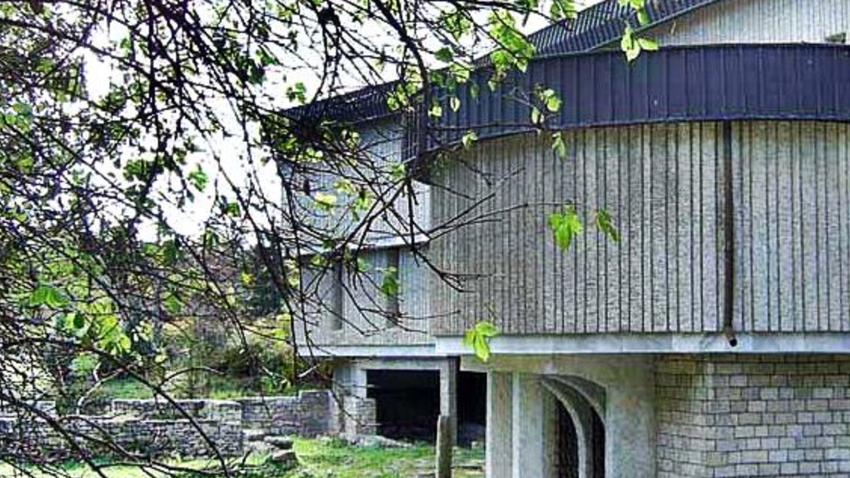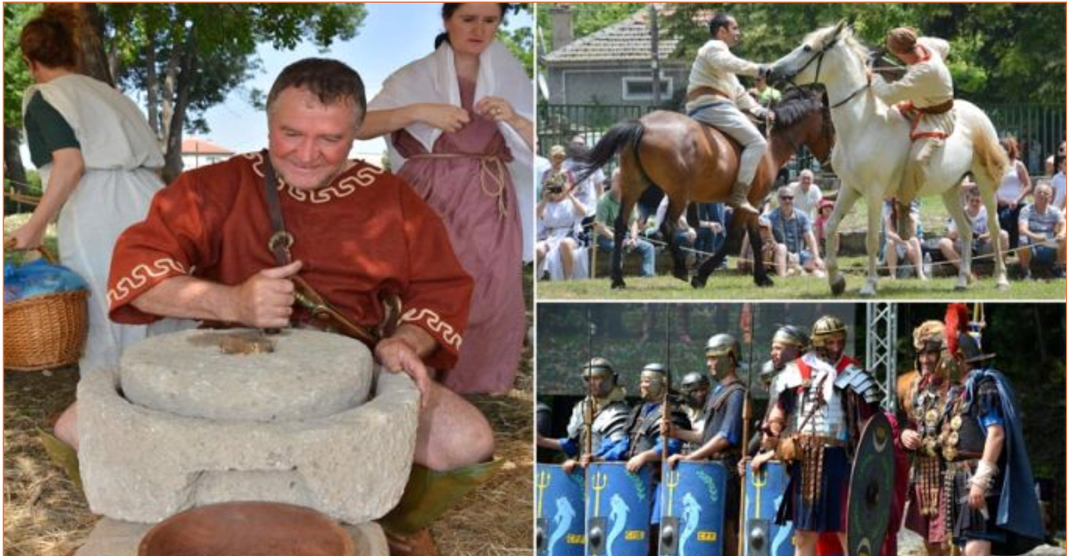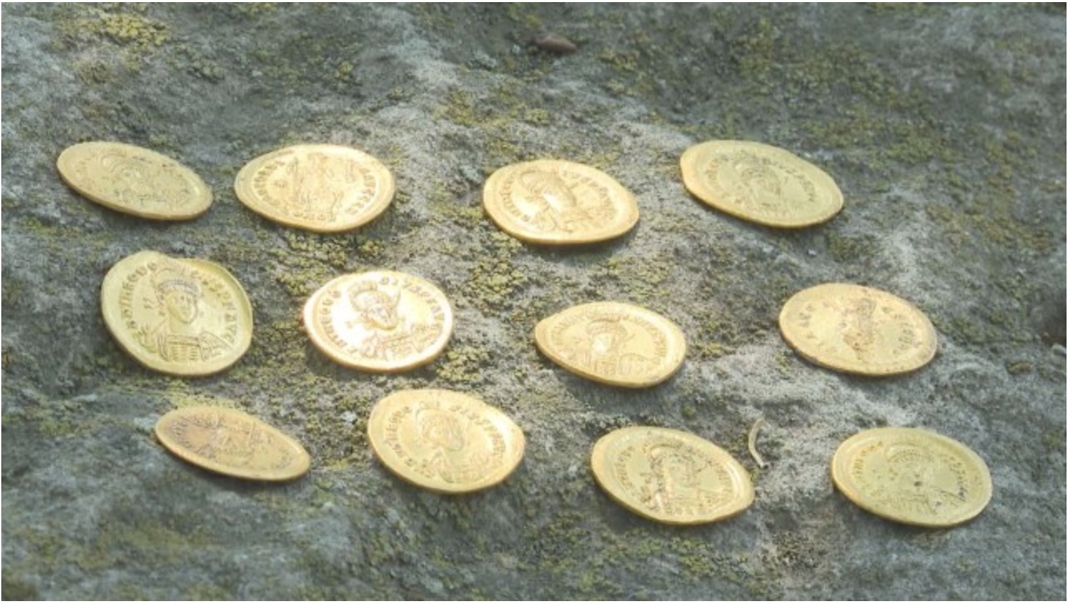It was in the vicinity of one of the Devnya karst springs in the Roman province of Lower Moesia (Moesia inferior) that the Roman Emperor Trajan (98-177 AD) stopped with his army. His sister Marcia sent her maid to fetch water, but woefully she dropped the golden vessel and it sank. But when it was not long before they saw it emerge from the nearby river, the Romans accepted it as a sign from the gods. Thus, the emperor decided to found a city in this place, calling it Marcianopolis after the name of his beautiful sister.

 The remains of one of the strategic centres for the Roman Empire lie under the modern Bulgarian town of Devnya (situated 22 km west of Varna). And since the settlement was at the crossing point of important roads in the 4th century AD, Emperor Valens turned it into a temporary capital and ruled over the whole empire there. The city only lasted four hundred years. In the late 6th century, it was ravaged during the invasion of the Avars who erected their dwellings on the foundations of the magnificent Roman buildings.
The remains of one of the strategic centres for the Roman Empire lie under the modern Bulgarian town of Devnya (situated 22 km west of Varna). And since the settlement was at the crossing point of important roads in the 4th century AD, Emperor Valens turned it into a temporary capital and ruled over the whole empire there. The city only lasted four hundred years. In the late 6th century, it was ravaged during the invasion of the Avars who erected their dwellings on the foundations of the magnificent Roman buildings.
“This was one of the largest cities founded during the Roman period on the territory of present-day Bulgaria”, says Ivan Sutev, director of the Museum of Mosaics in Devnya. “Its area covers more than 70 hectares, protected by an extremely strong fortress wall. The city was built on the so-called orthogonal system with straight streets oriented in the four world directions. In its central parts, as well as in the neighbourhoods, there were beautiful large public buildings, temples of deities from the Gaeco-Roman pantheon, a library, a triumphal arch. So far we have information about the Roman amphitheatre, which is located in the north-eastern region of the fortress of Marcianopolis and about a large early Christian basilica associated with the Christian period of the city, when it became a major administrative and bishopric centre.”
The ruined city reappeared in historical annals again in the early 19th century. And in 1976, when excavating for construction, the foundations of a large antique building with beautiful floor mosaics, which today are on display at the Museum of Mosaics in Devnya, was unearthed.
 “The mosaics – some of the finest examples of Roman mosaic art – are extremely well executed”, Ivan Sutev explains. “They were executed in the classic techniques using ceramics, baked clay, cobalt glass (the so-called smalt), marble and limestone in sixteen colours. The images suggest that the home may have been owned by a wealthy local landowner of Greek descent, since their subject matter is exclusively related to Greek mythology.”
“The mosaics – some of the finest examples of Roman mosaic art – are extremely well executed”, Ivan Sutev explains. “They were executed in the classic techniques using ceramics, baked clay, cobalt glass (the so-called smalt), marble and limestone in sixteen colours. The images suggest that the home may have been owned by a wealthy local landowner of Greek descent, since their subject matter is exclusively related to Greek mythology.”
 On the floor of the tablinum (the living room in Roman architecture) is perhaps the most interesting mosaic depicting the severed head of Medusa, with which the goddess Athena Pallas decorated her shield. The mosaic in the cubicle (the bedroom) recreates one of Zeus's many love adventures – the seduction of Antiope. Only the lower part is preserved from the floor decoration and exotic birds can be seen in the rich framework of the image. The only mosaic found in Bulgaria depicting the mythological plot of "The Abduction of Ganymede" was decorating the large living room in the home, and the gynaeceum (the women's quarters) – a geometric composition with interwoven floral ornaments, the ends of which probably depicted the four seasons, personified in the images of young women.
On the floor of the tablinum (the living room in Roman architecture) is perhaps the most interesting mosaic depicting the severed head of Medusa, with which the goddess Athena Pallas decorated her shield. The mosaic in the cubicle (the bedroom) recreates one of Zeus's many love adventures – the seduction of Antiope. Only the lower part is preserved from the floor decoration and exotic birds can be seen in the rich framework of the image. The only mosaic found in Bulgaria depicting the mythological plot of "The Abduction of Ganymede" was decorating the large living room in the home, and the gynaeceum (the women's quarters) – a geometric composition with interwoven floral ornaments, the ends of which probably depicted the four seasons, personified in the images of young women.
In order to attract tourists and promote this cultural heritage, the municipality of Devnya has been organizing a festival of antiquity for several years with the mass participation of the town residents.

“During the festival, we hold historical re-enactments of important events from the history of the Roman city – gladiator games, a slave market, demonstration of various crafts”, says Ivan Sutev. “We hope to soon create our own group of young people actively involved in these events at the authentic arena of the Roman amphitheatre.”

Even today, valuable artefacts continue to emerge from underneath the ruins of Marcianopolis, furthering our knowledge of this ancient Roman city. During this year historian Hristo Kuzov has discovered a treasure of 12 gold solidi and over 40 bronze coins, and his colleagues are already looking forward to the upcoming archaeological season.
Photos: Devnya Municipality, Museum of Mosaics, Wikipedia and BTA
Cape Kaliakra is one of the most picturesque places along Bulgaria’s Black Sea coast. The narrow rocky peninsula cuts 2 kilometers through the sea. Its steep slopes are 60-70 meters high. The waves have cut deep niches and caves..
As a result of glacial erosion during the Quaternary era, clusters of lakes were formed in the higher reaches of Rila Mountain, an essential element of the landscape. The string of the seven lakes of Rila is the longest, most scenic and most..
The Regional Museum of History in Turgovishte in the old, Revival-time part of town, called Varosha, houses over 30,000 exhibits. Some of the artifacts, discovered by archaeologists in these parts, go as far back as the Neolithic age. The..

+359 2 9336 661
